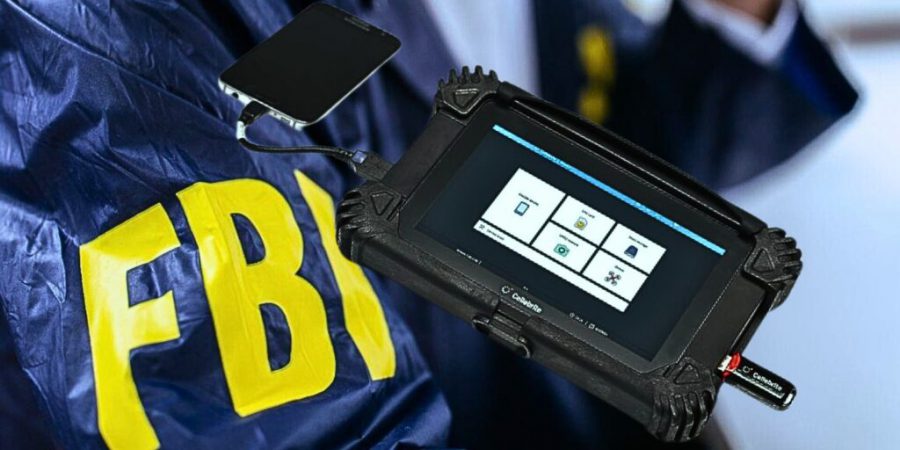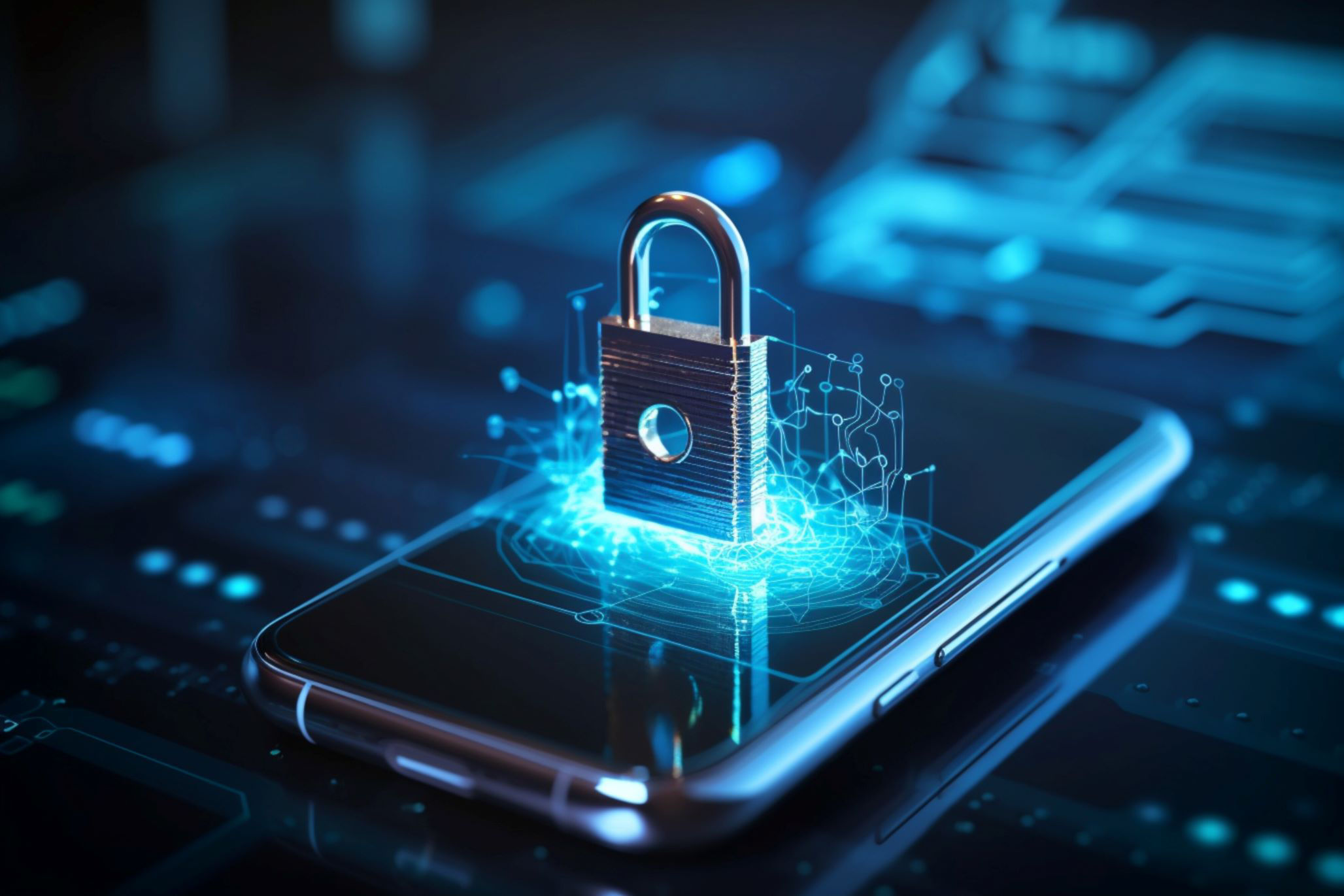Introduction
In the sweltering heat of a July evening in 2024, the tranquility of a political rally in Butler, Pennsylvania, was shattered by gunfire. Former President Donald Trump, addressing a crowd of supporters, became the target of an assassination attempt that left one spectator dead and two others injured. As the nation reeled from the shock, investigators faced a critical challenge: unlocking the shooter’s smartphone to uncover potential motives and collaborators. This high-profile incident thrust the Israeli digital forensics firm Cellebrite into the spotlight, highlighting the powerful capabilities and controversial nature of mobile device forensics. The company’s ability to quickly access the contents of the shooter’s phone not only aided the investigation but also reignited a fierce debate about privacy, security, and the reach of law enforcement in the digital age. The Trump assassination attempt serves as a compelling entry point into a complex web of technological, legal, and ethical issues surrounding mobile device security. It exemplifies the ongoing cat-and-mouse game between device manufacturers implementing ever-stronger security measures and forensic firms developing increasingly sophisticated methods to bypass them.
This article delves deep into the world of mobile device forensics, using the Trump incident as a springboard to explore broader issues of digital privacy and security. We’ll examine Cellebrite’s capabilities and limitations, unpack the technical intricacies of mobile data extraction, and consider the far-reaching implications for law enforcement, private citizens, and particularly cryptocurrency holders. As we navigate this digital landscape, we find ourselves at the intersection of competing interests: the need for effective law enforcement, the right to personal privacy, and the security of our most sensitive information. We’ll explore the legal and ethical considerations that arise from these powerful forensic tools, and provide insights into how individuals can protect their mobile data in an era of unprecedented digital vulnerability.
From the intricacies of Cellebrite’s technology to the global implications for privacy rights, from the challenges faced by cryptocurrency users to the ongoing battle between security experts and forensic tool developers, this article aims to provide a comprehensive overview of one of the most pressing technological and societal issues of our timeAs our lives become increasingly intertwined with our mobile devices, the story of Cellebrite and the Trump shooter’s phone serves as a microcosm of larger societal challenges. It compels us to confront difficult questions about the balance between security and privacy, the extent of government power in the digital realm, and the future of personal data protection in an increasingly connected world.
Background on Cellebrite
Cellebrite, founded in 1999 and headquartered in Petah Tikva, Israel, has become a dominant player in the field of digital forensics and mobile data extraction. Originally focused on providing phone-to-phone data transfer services, the company pivoted to forensic services in the mid-2000s, capitalising on the growing need for digital evidence in criminal investigations.
The company’s flagship product, the Universal Forensic Extraction Device (UFED), has become synonymous with mobile device unlocking and data extraction in law enforcement circles. Cellebrite’s client base has expanded dramatically over the years, now encompassing over 6,900 public safety agencies and enterprises across more than 100 countries. This includes law enforcement agencies in all 50 U.S. states and over 100 federal agencies. Cellebrite’s services extend beyond just government and law enforcement. The company has made significant inroads into the private sector, boasting that its clients include “six out of the world’s 10 largest pharmaceutical companies and six of the 10 largest oil refineries.” This expansion into corporate use has raised additional questions about the potential for misuse of such powerful data extraction tools.
The company’s methods for bypassing device security have long been shrouded in secrecy. Cellebrite typically requires its customers to sign non-disclosure agreements, aiming to prevent the dissemination of information about its techniques. This opacity has been a source of controversy, with privacy advocates arguing for greater transparency about the capabilities and limitations of these forensic tools. Cellebrite gained widespread public attention in 2016 when it was initially reported (though later disputed) that the FBI had used its technology to unlock the iPhone of the San Bernardino shooter. Since then, the company has been at the center of numerous high-profile cases and controversies.
In 2021, Cellebrite faced a significant challenge when the secure messaging app Signal managed to obtain and analyze one of their UFED devices. Signal’s findings, which included potential vulnerabilities in Cellebrite’s software, highlighted the ongoing cat-and-mouse game between security researchers and forensic tool developers.More recently, leaked documents in 2024 have shed light on the current capabilities and limitations of Cellebrite’s technology, particularly with regards to newer iPhone models and the latest iOS versions. These revelations have reignited discussions about the effectiveness of mobile security measures and the evolving landscape of digital forensics. As Cellebrite continues to play a crucial role in digital investigations worldwide, it remains at the center of debates surrounding privacy, security, and the boundaries of digital evidence collection. The company’s involvement in the investigation of the Trump assassination attempt serves as the latest chapter in its complex and controversial history.
Cellebrite’s Technical Capabilities
In the high-stakes world of digital forensics, Cellebrite’s technology stands at the forefront, its capabilities a closely guarded secret coveted by law enforcement agencies globally. The Israeli firm’s Universal Forensic Extraction Device (UFED) has become the go-to tool for unlocking mobile devices and extracting their contents. But what exactly can this technology do?

From leaked documents
Recent leaked documents have shed light on Cellebrite’s capabilities, revealing a complex landscape of extraction methods tailored to different devices and operating systems. For iOS devices, Cellebrite employs a technique called “full file system extraction” on older models, typically up to the iPhone X running iOS versions prior to 17.4. This method allows access to the entire iOS file system, including encrypted and deleted data. The process involves exploiting vulnerabilities in the device’s bootloader, the first piece of code that runs when an iOS device powers on. By injecting custom code during the boot process, Cellebrite’s tools can bypass security checks and gain low-level access to the device’s storage. This allows for a bit-by-bit copy of the device’s contents, known as a forensic image. For Android devices, Cellebrite’s capabilities are even more extensive. The company claims to perform both “file-based encryption” (FBE) and “full-disk encryption” (FDE) extraction on a wide range of Android phones. This includes bypassing secure startup passcodes and screen locks on devices from manufacturers like Samsung, Huawei, and Google.
One of Cellebrite’s most powerful features is the “After-First-Unlock” (AFU) extraction. This technique takes advantage of the fact that modern smartphones keep certain encryption keys in memory after the first unlock. By capturing these keys, Cellebrite can access much of the device’s data without needing the passcode, as long as the phone hasn’t been powered off since its last use.For particularly challenging devices, Cellebrite employs advanced techniques like the “Supersonic” feature, which uses specialized hardware to perform high-speed brute force attacks on device passcodes. This method can attempt thousands of passcode combinations per second, potentially cracking even complex alphanumeric passwords.
In cases where standard tools fall short, Cellebrite offers its Advanced Services (CAS). This premium offering involves sophisticated techniques like chip-off forensics, where the device’s memory chip is physically removed and read directly. They may also employ side-channel attacks, analyzing power consumption or electromagnetic emissions to infer information about the device’s operations.
The Trump shooter case highlighted Cellebrite’s ability to provide bespoke solutions for high-profile investigations. In this instance, they developed custom software to tackle the specific security measures on the shooter’s Samsung device, demonstrating their capacity for rapid, targeted development. However, Cellebrite’s capabilities are not without limits. The latest iPhones, particularly those running iOS 17.4 or later, have proven resistant to their standard extraction methods. This ongoing challenge underscores the cat-and-mouse game between device manufacturers and forensic tool developers, with each security update potentially rendering existing extraction methods obsolete. As mobile devices continue to evolve, storing ever more sensitive data behind increasingly sophisticated security measures, the capabilities of companies like Cellebrite remain a subject of both fascination and concern. Their tools represent the cutting edge of digital forensics, pushing the boundaries of what’s possible in data extraction while raising profound questions about privacy and security in our digital age.
How Cellebrite Works
In the shadowy world of digital forensics, Cellebrite’s technology stands as a testament to the lengths investigators will go to access locked devices. But how does this Israeli firm’s software manage to crack open even the most secure smartphones? At the heart of Cellebrite’s arsenal is a technique known as “physical extraction”. This method, akin to digital surgery, involves creating a complete copy of a device’s storage, bit by bit. It’s a process that can reveal not just current data, but also deleted files and hidden information. When physical extraction proves impossible, Cellebrite turns to “logical extraction”. This less invasive approach uses the device’s own operating system against it. By exploiting both documented and undocumented APIs, Cellebrite’s software can mimic authorized apps, tricking the device into revealing its secrets. For iOS devices, Cellebrite has another trick up its sleeve: backup analysis. By scrutinizing iTunes backups, which often contain a wealth of user data, investigators can sidestep some of Apple’s stringent security measures.
But what about devices protected by seemingly impenetrable passcodes? Cellebrite’s answer is “Supersonic”, a hardware system capable of attempting thousands of passcode combinations per second. This brute force approach is complemented by sophisticated “exploit chains” – series of vulnerabilities used in sequence to bypass security measures. Perhaps most intriguing is Cellebrite’s foray into the realm of volatile memory. For devices seized while powered on, a technique called “RAM dumping” can capture ephemeral data, including encryption keys. In extreme cases, Cellebrite even employs “cold boot attacks”, where RAM chips are rapidly cooled to preserve data after power-off.
Encryption, once the gold standard of data protection, is no longer an insurmountable barrier. Cellebrite’s tools can often extract encryption keys directly from a device’s memory or storage. Some versions of their software can even decrypt data on-the-fly during extraction. In the most challenging cases, Cellebrite resorts to advanced signal analysis. By measuring a device’s power consumption or electromagnetic emissions – a technique known as side-channel analysis – investigators can potentially infer information about the device’s operations, even passcode entry.
As our smartphones become ever more central to our lives, the capabilities of tools like Cellebrite raise profound questions. In this high-stakes technological arms race, who will ultimately prevail – those seeking to protect our digital privacy, or those determined to pierce it?
The Trump Shooter Case Study
On July 13, 2024, during a campaign rally in Butler, Pennsylvania, former President Donald Trump became the target of an assassination attempt. The incident, which left one spectator dead and two others injured, shocked the nation and brought renewed attention to the capabilities of digital forensics in high-profile investigations. This case study examines how Cellebrite’s technology played a crucial role in unlocking the shooter’s phone and the implications of this process.

The Incident
Thomas Matthew Crooks, a 20-year-old man from Bethel Park, Pennsylvania, opened fire on Trump using an AR-style rifle from approximately 410 feet away. Secret Service agents quickly neutralized the threat, fatally shooting Crooks. In the aftermath, investigators faced the challenge of uncovering Crooks’ motives and potential connections.
The Device
Crooks owned a newer model Samsung smartphone running the Android operating system. This device potentially held crucial evidence about his planning, motivations, and possible collaborators.
The Challenge
While the Pittsburgh FBI bureau had a Cellebrite license, they encountered difficulties cracking the passcode on Crooks’ phone. This highlighted a critical limitation in their standard toolkit and the need for more advanced solutions in high-stakes cases.
Cellebrite’s Involvement
Recognizing the urgency and high-profile nature of the case, Cellebrite took an unusual step. The company provided the FBI with unreleased, cutting-edge software specifically designed to tackle the security measures on Crooks’ device model.
The Breakthrough
Using this advanced software, FBI technicians were able to unlock Crooks’ smartphone in approximately 40 minutes. This rapid access to the device’s contents was crucial in the early stages of the investigation, allowing agents to quickly pursue leads and assess potential ongoing threats.
Key Findings
Once unlocked, the phone yielded significant insights:
- Crooks had visited the rally site at least once in the days leading up to the attack, indicating premeditation.
- Search history revealed queries about symptoms of depressive disorders, potentially shedding light on his mental state.
- The phone contained searches for images of both Donald Trump and President Biden, suggesting a broader interest in political figures.
Implications
- Technological Arms Race: This case underscores the ongoing battle between device manufacturers implementing stronger security measures and forensic companies developing more advanced unlocking techniques.
- Customized Solutions: Cellebrite’s willingness to provide unreleased software highlights the company’s ability to offer tailored solutions for high-priority cases, raising questions about equal application of justice.
- Android vs. iOS: The relative ease of unlocking this Android device contrasts with the challenges often faced with newer iOS devices, as highlighted in leaked Cellebrite documents.
- Privacy Concerns: The ability to quickly access the phone’s contents reignited debates about digital privacy rights and the extent of law enforcement’s reach into personal devices.
- Cryptocurrency Considerations: While not directly relevant in this case, the incident serves as a reminder of the vulnerability of digital assets stored on mobile devices, particularly pertinent for cryptocurrency holders.
Legal and Ethical Questions
The case raised several important questions:
- Should law enforcement have different levels of access depending on the severity of the crime?
- How does the use of unreleased, potentially untested software impact the admissibility of evidence in court?
- What are the implications for privacy when companies like Cellebrite can develop tools to bypass the latest security measures?
The Trump shooter case demonstrates both the power and the controversy surrounding mobile device forensics. While Cellebrite’s technology proved crucial in quickly advancing a high-profile investigation, it also highlighted the delicate balance between public safety and individual privacy rights. As mobile devices continue to play a central role in our lives, the debate over access to their contents is likely to intensify, shaping both technological development and legal frameworks in the years to come.
Privacy and Security Concerns
The rapid advancement of mobile device forensics technology, exemplified by Cellebrite’s capabilities, has ignited a fierce debate over the balance between law enforcement needs and individual privacy rights. As our smartphones have become digital extensions of ourselves, containing our most personal information, communications, and even financial data, the ability to access these devices raises profound questions about the nature of privacy in the digital age. At the heart of this debate is the question of whether any entity, even law enforcement with a warrant, should have the ability to bypass the security measures we put in place to protect our personal information. Proponents of strong digital privacy argue that creating backdoors or exploits for law enforcement inevitably weakens overall security, potentially exposing users to malicious actors. They contend that the right to privacy is fundamental and that the contents of our devices should be as protected as the thoughts in our minds.
On the other hand, law enforcement agencies and their supporters argue that in an era where criminals and terrorists increasingly rely on digital communication and planning, the ability to access mobile devices is crucial for public safety. They point to cases like the Trump assassination attempt, where rapid access to the shooter’s phone provided valuable insights into the crime. The argument is that with proper oversight and warrants, this technology serves the greater good by solving crimes and preventing future attacks.
However, the existence of tools like those developed by Cellebrite raises concerns about potential misuse. If these capabilities fall into the wrong hands, whether through theft, hacking, or corrupt officials, the privacy implications could be severe. There’s also the question of mission creep – technologies developed for high-stakes criminal investigations could potentially be used for more mundane law enforcement activities or even civil matters, eroding privacy norms over time. The global nature of both technology companies and law enforcement further complicates the issue. Tools developed in one jurisdiction may be used in countries with less robust privacy protections or due process, potentially enabling human rights abuses. The lack of uniform international standards for digital privacy and forensics creates a patchwork of policies that can be exploited by both criminals and overzealous authorities. For individual users, particularly those holding sensitive information like cryptocurrency wallet details, these developments are particularly concerning. The idea that a determined entity could potentially access all the contents of one’s device, including financial information and private keys, underscores the need for enhanced security measures and offline storage solutions for critical data.
Moreover, the cat-and-mouse game between security developers and forensics firms raises questions about the long-term viability of mobile device security. As companies like Apple and Google implement stronger encryption and security features, firms like Cellebrite work to bypass them. This constant cycle may lead to an arms race in mobile security, potentially driving up costs for consumers and creating a digital divide between those who can afford the latest, most secure devices and those who cannot. The ethical implications for tech companies are also significant. They must balance their commitment to user privacy with potential legal obligations to assist law enforcement. This tension has led to high-profile standoffs between tech giants and governments, highlighting the complex interplay between corporate policies, user trust, and national security concerns. As society grapples with these issues, it’s clear that a nuanced approach is necessary. Blanket bans on forensic technologies could hinder legitimate law enforcement efforts, while unrestricted access could devastate personal privacy. Finding a middle ground that respects individual rights while addressing genuine security concerns is a challenge that will require ongoing dialogue between technologists, policymakers, law enforcement, and privacy advocates. The debate surrounding mobile device forensics and tools like Cellebrite speaks to larger questions about the role of technology in our lives and the evolving concept of privacy in the digital age. As we continue to entrust more of our personal and financial lives to our mobile devices, the stakes in this debate will only grow higher, demanding thoughtful consideration and robust safeguards to protect both public safety and individual privacy.
Implications for Cryptocurrency Holders
The advancements in mobile device forensics, particularly those demonstrated by Cellebrite’s technology, have significant implications for cryptocurrency holders. As digital assets become increasingly mainstream, the intersection of mobile security and crypto storage creates a new frontier of vulnerabilities and concerns for investors and enthusiasts alike. For many cryptocurrency holders, mobile devices serve as a primary means of accessing and managing their digital assets. Mobile wallets, trading apps, and authentication tools for exchanges are commonplace on smartphones. This convenience, however, comes with a considerable risk in light of the capabilities of modern forensic tools. The ability of technologies like Cellebrite to potentially access the full contents of a mobile device poses a direct threat to the security of cryptocurrencies stored or accessed via smartphones. Private keys, seed phrases, and login credentials for exchanges could all be exposed if a device falls into the wrong hands. Even if the cryptocurrency itself is stored securely off-device, the information gleaned from a compromised phone could provide attackers with enough data to target an individual’s holdings.

Moreover, the forensic extraction of data doesn’t just threaten the security of assets; it also poses significant privacy risks. Transaction histories, wallet addresses, and communication logs related to cryptocurrency activities could all be exposed, potentially compromising an individual’s financial privacy. In jurisdictions with strict regulations or in cases of civil asset forfeiture, this information could be used against the holder. The case of the Trump shooter, while not directly related to cryptocurrencies, serves as a stark reminder of how quickly and thoroughly a mobile device can be accessed under certain circumstances. For cryptocurrency holders, this underscores the importance of robust security practices that go beyond relying on a device’s built-in security features.
Cold storage solutions, such as hardware wallets, gain even more importance in light of these developments. By keeping private keys and critical information off of mobile devices entirely, users can significantly reduce their exposure to mobile-based vulnerabilities. However, this comes at the cost of convenience, highlighting the ongoing tension between security and usability in the crypto space. For those who do use mobile devices for cryptocurrency-related activities, the implications of advanced forensics tools emphasize the need for additional layers of security. This might include using specialized encrypted apps for storing sensitive information, implementing strong multi-factor authentication that doesn’t rely solely on the mobile device, and regularly transferring assets to more secure storage solutions. The potential for law enforcement or other entities to access mobile devices also raises questions about plausible deniability. Cryptocurrency holders may need to consider strategies for protecting their privacy even in scenarios where device access is compelled, whether through legal means or coercion.
From a broader perspective, the evolving capabilities of mobile forensics may influence the development of cryptocurrency technologies themselves. We may see an increased emphasis on privacy-focused coins, decentralized identity solutions, and blockchain-based secure communication tools that aim to protect users’ information even if their devices are compromised.
For developers of cryptocurrency apps and wallets, the imperative to implement robust security measures has never been clearer. This might include advanced encryption, secure enclaves for storing sensitive data, and designing apps with the assumption that the underlying device could be compromised. Ultimately, the implications of advanced mobile forensics for cryptocurrency holders extend beyond mere technical considerations. They touch on fundamental questions of financial privacy, the right to protect one’s assets, and the balance between personal security and law enforcement capabilities. As the cryptocurrency ecosystem continues to mature, navigating these challenges will be crucial for maintaining the promise of financial sovereignty that drew many to digital assets in the first place. The evolving landscape of mobile security and forensics serves as a reminder that in the world of cryptocurrencies, vigilance is not just a virtue—it’s a necessity. Holders must stay informed about the latest security developments, adapt their practices accordingly, and perhaps most importantly, recognize that the most secure wallet is often the one that’s not connected to any network at all.
The Cat and Mouse Game of Mobile Security
The ongoing battle between mobile device manufacturers and forensic tool developers like Cellebrite epitomizes a relentless technological cat and mouse game. This perpetual cycle of security enhancements and exploit discoveries shapes the landscape of mobile privacy and data protection, with significant implications for users, law enforcement, and the tech industry at large. At the forefront of this contest are companies like Apple and Google, continuously working to fortify their operating systems against unauthorized access. With each new iteration of iOS or Android, these tech giants implement increasingly sophisticated security measures. Hardware-based encryption, secure enclaves for storing sensitive data, and advanced biometric authentication are just a few of the tools deployed in this arms race.
Apple, in particular, has taken a strong stance on user privacy, regularly updating iOS to patch vulnerabilities and strengthen overall system security. The company’s commitment was prominently displayed in its 2016 standoff with the FBI over unlocking the San Bernardino shooter’s iPhone, a case that brought the tension between privacy and security into the public spotlight. On the other side of this digital battlefield are firms like Cellebrite, constantly probing for weaknesses and developing new methods to bypass these security measures. Their motivations are complex – while they often cite the needs of law enforcement and national security, there’s also a clear commercial incentive to maintain their position as leaders in mobile forensics.
The dynamics of this game are evident in the leaked Cellebrite documents discussed earlier. The revelation that newer iPhone models running recent iOS versions were resistant to Cellebrite’s tools demonstrates how quickly the tide can turn. What was once a reliable method for accessing device data can become obsolete with a single software update. This back-and-forth has far-reaching consequences. For device manufacturers, it necessitates substantial investment in security research and development. Each new exploit discovered becomes a priority to patch, leading to frequent software updates and sometimes even hardware redesigns. For forensic tool developers, the challenge is to stay ahead of these updates, constantly seeking new vulnerabilities to exploit. This often involves sophisticated reverse engineering, the development of novel attack vectors, and sometimes even the acquisition of zero-day exploits from the grey market of security researchers and hackers.
Law enforcement agencies find themselves caught in the middle of this technological tug-of-war. They rely on tools like those provided by Cellebrite to carry out investigations, but must also contend with the possibility that these tools may become ineffective at any moment. This uncertainty can impact ongoing cases and influence how digital evidence is handled and prioritised. For the average user, this cat and mouse game has both positive and negative implications. On one hand, the constant pressure from forensic tools drives improvements in overall device security, benefiting all users. On the other hand, the existence of these tools means that no system is ever truly impenetrable, leaving a lingering uncertainty about the true extent of one’s digital privacy. The game extends beyond just operating systems and forensic tools. App developers, too, play a crucial role. Secure messaging apps like Signal have entered the fray, implementing features specifically designed to resist forensic analysis. This adds another layer to the security landscape, sometimes putting app developers at odds with both device manufacturers and forensic firms. As this technological contest continues, it raises important questions about the future of mobile security. Will there ever be a definitive “winner,” or is this an eternal cycle? How do we balance the legitimate needs of law enforcement with the right to privacy? And as mobile devices become even more central to our lives, storing ever more sensitive information, what are the broader societal implications of this ongoing battle?
The cat and mouse game of mobile security is more than just a technical challenge – it’s a reflection of our evolving relationship with technology and our attempts to reconcile privacy, security, and the rule of law in the digital age. As this game continues to unfold, it will undoubtedly shape not just the devices we use, but also the legal and ethical frameworks that govern our increasingly digital lives.
Legal and Ethical Considerations
The capabilities of mobile forensic tools like Cellebrite’s UFED have thrust us into uncharted legal and ethical territory, challenging our traditional notions of privacy, due process, and the limits of law enforcement power. As technology outpaces legislation, society grapples with complex questions that strike at the heart of individual rights in the digital age.
At the forefront of legal considerations is the Fourth Amendment in the United States, which protects against unreasonable searches and seizures. Courts have grappled with how to apply this 18th-century principle to 21st-century technology. The landmark case Riley v. California (2014) established that law enforcement generally needs a warrant to search a cell phone, recognising the vast amounts of personal data these devices contain. However, the existence of tools that can quickly and comprehensively access a device’s contents raises new questions about the scope and execution of such warrants. The concept of “reasonable expectation of privacy” is central to these debates. As mobile devices become repositories for our most intimate thoughts, communications, and data, there’s an argument that they should be afforded the highest level of privacy protection. Conversely, law enforcement agencies contend that with proper judicial oversight, accessing these devices is crucial for public safety and criminal investigations.
Internationally, the legal landscape is even more complex. The European Union’s General Data Protection Regulation (GDPR) sets strict standards for data protection and privacy, potentially conflicting with the use of expansive forensic tools. Countries with authoritarian tendencies may exploit such technologies to suppress dissent, highlighting the dual-use nature of these tools and the ethical responsibilities of their developers. The principle of proportionality comes into play when considering the use of advanced forensic tools. Is it ethically justifiable to use the same level of intrusive technology for a minor offense as for a major terrorist threat? This question becomes particularly poignant in cases like the Trump assassination attempt, where national security concerns may be invoked to justify extraordinary measures. Another critical legal and ethical issue is the potential for bias and misuse. As with any powerful tool, there’s a risk that mobile forensic technologies could be disproportionately used against marginalised communities or exploited for personal gain. Ensuring accountability and transparency in the use of these tools is crucial but challenging, given the secretive nature of many forensic techniques.
The role of tech companies in this landscape is also ethically fraught. Apple’s stance on user privacy, for instance, has put it at odds with law enforcement requests. These companies must balance their commitment to user privacy with their social responsibilities and legal obligations, a tightrope walk with significant implications for their global user base.
The concept of “privacy by design” is gaining traction as a potential ethical framework for addressing these issues. This approach advocates for building privacy protections into products and systems from the ground up, rather than as an afterthought. However, implementing this concept in a world where law enforcement seeks backdoors and access points presents significant challenges. The ethical considerations extend to the developers and employees of companies like Cellebrite. These individuals must grapple with the knowledge that their work, while potentially crucial for solving crimes, could also be used to violate individual privacy or support oppressive regimes. This has led to internal conflicts and ethical debates within the tech community. As cryptocurrencies and other digital assets gain prominence, new legal questions emerge. How do existing financial regulations apply to decentralized digital currencies? What rights do law enforcement agencies have to access or seize these assets? The borderless nature of many cryptocurrencies adds another layer of complexity to these legal considerations. Looking ahead, there’s a pressing need for updated legal frameworks that can keep pace with technological advancements. This may involve redefining concepts of ownership and privacy in the digital realm, establishing clearer guidelines for the use of forensic tools, and creating robust oversight mechanisms to prevent abuse.
Ultimately, the legal and ethical considerations surrounding mobile device forensics reflect broader societal debates about the balance between security and privacy, the extent of government power, and the nature of individual rights in the digital age. As we navigate these murky waters, it’s crucial to foster ongoing dialogue between technologists, ethicists, legal scholars, and policymakers to ensure that our legal and ethical frameworks evolve in step with our technological capabilities. The resolution of these complex issues will shape not just how we use our mobile devices, but also the fundamental relationship between citizens, technology, and the state in the years to come. As society continues to digitize, finding ethically sound and legally robust solutions to these challenges becomes not just important, but essential for maintaining the delicate balance between innovation, security, and individual liberty.
Protecting Your Mobile Data
In an era where mobile devices have become repositories of our most sensitive information, protecting your mobile data has never been more crucial. The advanced capabilities of forensic tools like Cellebrite underscore the need for users to take proactive steps to safeguard their digital lives. While no security measure is foolproof, implementing a multi-layered approach can significantly enhance your mobile data protection.
First and foremost, keeping your device’s operating system and apps up-to-date is essential. Software updates often include critical security patches that address known vulnerabilities. Enable automatic updates whenever possible to ensure you’re always running the latest, most secure versions. Strong authentication is your first line of defense. Use a complex alphanumeric passcode rather than a simple 4-digit PIN. Biometric authentication methods like fingerprint scanners or facial recognition add an extra layer of security, but remember that in some jurisdictions, you may be compelled to provide biometric data to unlock your device, whereas divulging a passcode has stronger legal protections. Enable full-device encryption, which is standard on iOS devices and available on most Android phones. This ensures that your data is unreadable without the correct authentication, even if someone gains physical access to your device. Be mindful of the permissions you grant to apps. Regularly review and revoke unnecessary permissions, particularly those involving location data, camera access, or contact lists. Consider using privacy-focused alternatives for sensitive activities like web browsing or messaging.
For cryptocurrency holders, the stakes are even higher. Never store large amounts of cryptocurrency or private keys directly on your mobile device. Use hardware wallets for long-term storage and consider using a dedicated device for crypto transactions that isn’t used for daily activities. Implement two-factor authentication (2FA) for all critical accounts, especially those related to finance or cryptocurrencies. Use authenticator apps rather than SMS-based 2FA, as the latter can be vulnerable to SIM-swapping attacks.
Be cautious about the networks you connect to. Public Wi-Fi networks can be breeding grounds for data theft. Use a reputable VPN service when connecting to public networks to encrypt your internet traffic. Regularly back up your data to a secure, encrypted location. This not only protects against data loss but also allows you to wipe your device if it’s lost or stolen, knowing you can restore your information later. Consider using secure, encrypted cloud storage services for sensitive documents rather than keeping them directly on your device. This distributes your risk and can make it harder for a single point of compromise to expose all your data. For the most sensitive information, consider using “air-gapped” devices that are never connected to the internet. While not practical for everyday use, this can provide an extra layer of security for critical data or cryptocurrency keys. Be aware of physical security as well. Use privacy screens to prevent visual hacking in public spaces, and never leave your device unattended. Consider enabling remote wipe features that allow you to erase your device’s data if it’s lost or stolen.
Educate yourself about social engineering tactics. Many data breaches occur not through technical means but through manipulation of users. Be skeptical of unsolicited messages or requests for personal information. For those in high-risk professions or dealing with extremely sensitive data, consider using specialized secure phones or operating systems designed with privacy as the primary focus. Remember that security is an ongoing process, not a one-time setup. Regularly review your security practices, stay informed about new threats and protection methods, and be prepared to adapt your approach as the digital landscape evolves. While these measures may seem daunting, they represent a necessary response to the sophisticated tools and techniques that can be used to access mobile data. By implementing these practices, you create multiple barriers that significantly increase the difficulty of unauthorized access to your personal information. Protecting your mobile data is about more than just securing a device; it’s about safeguarding your digital identity, financial assets, and personal privacy in an increasingly connected world. As mobile devices continue to be central to our lives, taking control of your digital security becomes not just a technical exercise, but a fundamental aspect of personal freedom and security in the 21st century.
Final Words
The landscape of mobile device security and forensics is a dynamic battlefield, one that reflects the broader tensions between privacy, security, and the rule of law in our digital age. The case of the Trump assassination attempt and the subsequent use of Cellebrite’s technology to unlock the shooter’s phone serves as a microcosm of these complex issues, highlighting both the power of modern forensic tools and the privacy concerns they raise.
As we’ve explored throughout this article, the capabilities of companies like Cellebrite have far-reaching implications. For law enforcement, these tools represent a crucial asset in solving crimes and protecting public safety. The rapid unlocking of the shooter’s phone in the Trump case demonstrates how such technologies can provide vital information in high-stakes situations. However, the same capabilities that aid law enforcement also pose significant privacy risks for ordinary citizens. The potential for these tools to access the vast troves of personal data stored on our devices raises serious questions about digital privacy rights and the extent of government reach into our personal lives. For cryptocurrency holders and others with sensitive digital assets, these concerns are particularly acute.
The ongoing cat-and-mouse game between device manufacturers and forensic tool developers underscores the ever-evolving nature of mobile security. Each new security measure is met with attempts to circumvent it, driving a cycle of innovation that shapes the devices we use daily. This technological arms race has significant implications for users, pushing the boundaries of device security while also highlighting the persistent vulnerabilities that exist. Legal and ethical considerations surrounding these technologies remain in flux. The rapid pace of technological advancement often outstrips the ability of legal systems to adapt, creating gray areas that challenge our traditional notions of privacy and due process. As society grapples with these issues, it’s clear that new legal frameworks and ethical guidelines will be necessary to balance the needs of law enforcement with the privacy rights of individuals. For users, the reality of advanced mobile forensics underscores the critical importance of proactive data protection. The measures outlined in this article – from strong authentication and encryption to mindful app permissions and secure storage practices – are no longer optional but essential in safeguarding our digital lives. Looking to the future, it’s clear that the issues surrounding mobile device forensics will only grow in importance. As our lives become increasingly intertwined with our digital devices, the data they contain becomes ever more valuable – and vulnerable. The decisions we make now, both as individuals and as a society, will shape the future of digital privacy and security.
The story of Cellebrite, the Trump assassination attempt, and the broader landscape of mobile forensics is not just about technology. It’s about the fundamental values we hold as a society – privacy, security, justice, and freedom – and how we choose to balance these often competing interests in the digital age. As we continue to navigate these complex waters, ongoing dialogue, informed decision-making, and a commitment to protecting individual rights while maintaining public safety will be crucial. The challenges are significant, but so too are the opportunities to create a digital future that respects both security and privacy. By staying informed, engaging in these important debates, and taking proactive steps to protect our digital lives, we can all play a role in shaping that future.











